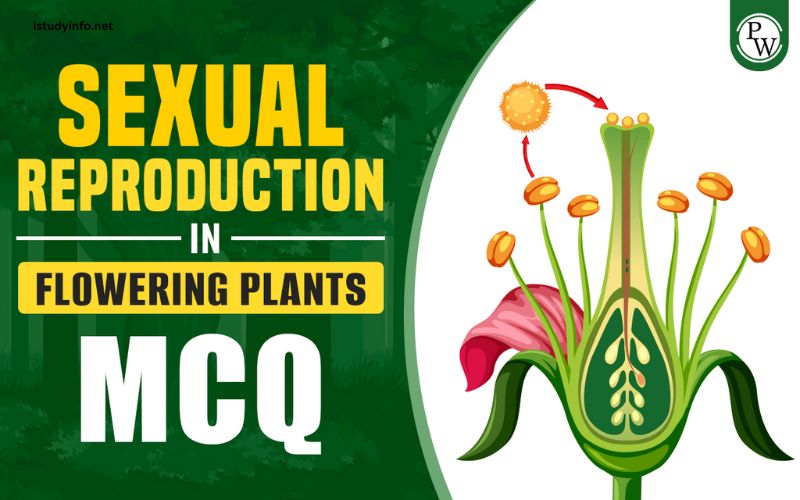Sexual reproduction is a fundamental process in the life cycle of flowering plants. It involves the fusion of male and female gametes to form a zygote, which then develops into a new plant. This process is crucial for the genetic diversity, adaptation, and survival of plant species.
In this article, we will explore the various aspects of sexual reproduction in flowering plants, including the structure and function of flowers, the male and female reproductive parts, pollination mechanisms, fertilization, and the development of seeds and fruits. Additionally, we will provide a comprehensive set of NEET (National Eligibility cum Entrance Test) questions related to this topic to help you assess your understanding and prepare for your exams.
Importance and Advantages of Sexual Reproduction
Sexual reproduction in flowering plants offers several advantages over asexual reproduction:
- Genetic Diversity: Sexual reproduction involves the fusion of two genetically distinct gametes, resulting in offspring with a unique genetic makeup. This genetic diversity allows plants to adapt to changing environmental conditions, resist pests and diseases, and explore new ecological niches.
- Hybrid Vigor: The combination of genetic material from two parents can lead to the expression of desirable traits in the offspring, a phenomenon known as hybrid vigor or heterosis. This can result in plants with improved growth, yield, or resistance to stressors.
- Recombination of Genetic Material: Sexual reproduction facilitates the recombination of genetic material, allowing for the creation of new gene combinations and the expression of novel traits. This process is crucial for the evolution and adaptation of plant species.
- Dispersal of Genetic Material: The production of seeds and fruits through sexual reproduction enables the dispersal of genetic material to new locations, facilitating the colonization of new habitats and the maintenance of genetic diversity across a species’ range.
Structure and Function of Flowers
Flowers are the reproductive structures of flowering plants, and they play a crucial role in the sexual reproduction process. Flowers are typically composed of four main parts:
- Sepals: The outermost whorl of leaf-like structures that protect the flower bud.
- Petals: The colorful, often showy structures that attract pollinators.
- Stamens: The male reproductive parts, consisting of the filament and the anther, which produces pollen grains.
- Carpel: The female reproductive part, consisting of the stigma, style, and ovary, which contains the ovules.
The arrangement and structure of these flower parts vary among different plant species, reflecting their adaptations to specific pollination mechanisms and environmental conditions.
Male Reproductive Parts in Flowering Plants
The male reproductive parts of a flowering plant are the stamens, which are composed of the filament and the anther. The anther is the structure that produces the pollen grains, which contain the male gametes. The filament supports the anther and helps to position it for efficient pollen release and transfer.
The pollen grains contain the male gametophyte, which is the reduced, multicellular stage of the male plant. Each pollen grain contains two male gametes, which will fuse with the female gametes during the fertilization process.
Female Reproductive Parts in Flowering Plants
The female reproductive parts of a flowering plant are collectively known as the carpel, which consists of the stigma, style, and ovary. The stigma is the receptive surface that captures the pollen grains during pollination. The style is the elongated structure that connects the stigma to the ovary, and the ovary contains the ovules, which are the female gametophytes.
The ovules are the structures that will develop into the seeds after fertilization. Each ovule contains a female gametophyte, which is the reduced, multicellular stage of the female plant. The female gametophyte contains the egg cell, which will fuse with the male gametes during fertilization.
Pollination – Types and Mechanisms
Pollination is the process by which pollen grains are transferred from the anther to the stigma of a flower. There are two main types of pollination:
- Self-Pollination: In this process, the pollen from the anther of a flower is transferred to the stigma of the same flower or another flower on the same plant. This ensures that the genetic material remains within the same individual plant.
- Cross-Pollination: In this process, the pollen from the anther of one flower is transferred to the stigma of a different flower, either on the same plant or on a different plant of the same species. This facilitates genetic exchange between individuals and promotes genetic diversity.
The mechanisms of pollination can vary widely among plant species and are often adapted to specific pollinators, such as insects, birds, bats, or even wind. Adaptations may include the production of nectar or fragrant compounds to attract pollinators, the positioning of the stamens and stigma for efficient pollen transfer, and the timing of flower opening and closing.
Fertilization in Flowering Plants
After pollination, the pollen grains germinate on the stigma and grow pollen tubes that extend down the style and into the ovary. The male gametes within the pollen grains then travel through the pollen tubes and fuse with the female gametes (egg cells) within the ovules, a process known as double fertilization.
During double fertilization, one male gamete fuses with the egg cell to form the zygote, which will develop into the embryo of the seed. The other male gamete fuses with the central cell of the ovule, forming the endosperm, which will provide nourishment for the developing embryo.
Development of Seeds and Fruits
Following fertilization, the ovule develops into a seed, and the ovary develops into a fruit. The seed contains the embryo, which will eventually germinate and grow into a new plant, as well as the endosperm, which provides nourishment for the embryo during germination and early growth.
The fruit serves to protect the seed and facilitate its dispersal. Fruits can take on a variety of forms, such as dry fruits (e.g., capsules, achenes, and legumes) or fleshy fruits (e.g., berries, drupes, and pomes), depending on the plant species and its adaptations.
NEET Questions on Sexual Reproduction in Flowering Plants
Here are some sample NEET questions related to the topic of sexual reproduction in flowering plants:
- What is the primary function of the sepals in a flower?
- Explain the role of the stigma in the pollination process.
- Describe the process of double fertilization in flowering plants.
- How does self-pollination differ from cross-pollination in terms of genetic diversity?
- Identify the male and female reproductive parts of a flower and explain their respective roles.
- What are the advantages of sexual reproduction in flowering plants compared to asexual reproduction?
- Explain the significance of the endosperm in the development of the seed.
- Describe the different mechanisms of pollination and provide examples of plant-pollinator relationships.
- How does the structure of the carpel contribute to the success of fertilization in flowering plants?
- Discuss the importance of genetic recombination in the evolution and adaptation of plant species.
To learn more about sexual reproduction in flowering plants and how to tackle NEET questions on this topic, consider enrolling in our online biology course. Our comprehensive curriculum and expert instructors will provide you with the knowledge and skills you need to excel in your NEET preparation. Click here to explore our course offerings and enroll today!
Conclusion
Sexual reproduction in flowering plants is a complex and fascinating process that is essential for the survival and evolution of plant species. By understanding the structure and function of flowers, the roles of male and female reproductive parts, the mechanisms of pollination and fertilization, and the development of seeds and fruits, you can deepen your understanding of this vital biological process.
The NEET questions provided in this article will help you assess your knowledge and identify areas that require further study. Remember, a comprehensive understanding of sexual reproduction in flowering plants is crucial not only for your NEET preparation but also for your broader appreciation of the natural world.
















